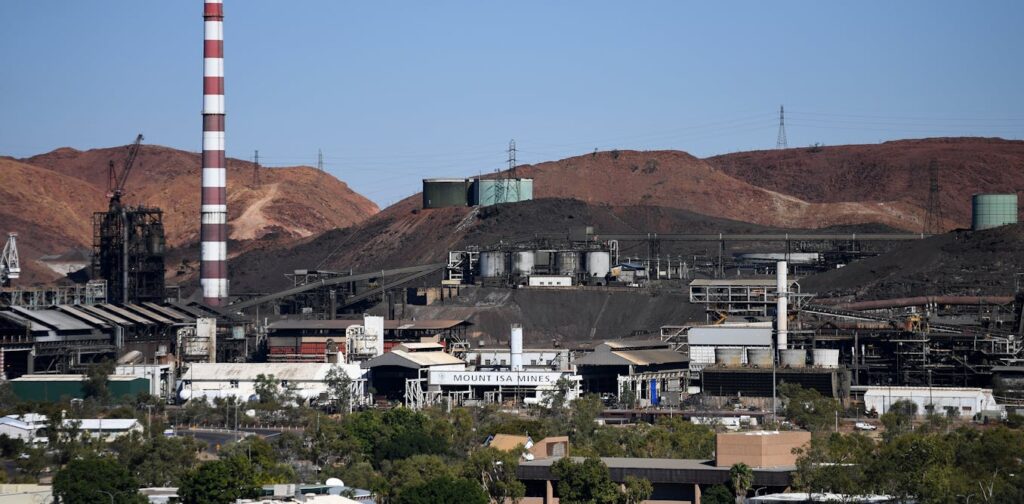
The federal government’s announcement of a A$600 million rescue package for Glencore’s copper smelting and refining operations in Mount Isa and Townsville marks a definitive shift in Australia’s industry policy. This move follows the A$2.4 billion rescue of the Whyalla steelworks and a smaller assistance package for metals smelter Nyrstar. The implications of these decisions suggest a new normal for government intervention in private industry.
At the time it was announced, the Whyalla rescue appeared to be a one-off special case. The steelworks’ owner, Sanjeev Gupta, faced financial difficulties following the collapse of its major financier, Greensill Capital. The rescue plan included support for transitioning from unsustainable blast furnace technology to “green steel,” though this remains a challenging prospect. In contrast, Swiss giant Glencore, a highly profitable corporation, made a business decision to close its copper operations. The bailout will keep those operations going for three years, after which the same issue will likely re-emerge.
A Break with Neoliberalism
This shift marks a final break with the policy framework known as “neoliberalism” or “economic rationalism,” under which such intervention was seen as an undesirable “distortion” of the market, to be undertaken only in emergencies, if at all. The underlying assumption was that market signals would yield the most efficient allocation of resources. However, neoliberal ideas have been in retreat since the global financial crisis of 2008.
China has presented its own state-led model as a superior alternative, leveraging control of “critical minerals” as a geopolitical strategy. Recently, China’s plan to tighten export controls on critical minerals sparked an angry response from US President Donald Trump, who threatened to impose 100% tariffs on China in retaliation. The US has been backing away from free-trade ideas since the election of the first Trump administration in 2016 and has now abandoned them altogether.
More Questions Than Answers
Abandoning the dogmas of neoliberalism is one thing; developing a coherent alternative is another. A framework that includes bailouts of mineral processing operations as a routine policy tool raises several major questions. What are the criteria for such a bailout? What, if anything, should the public receive in return? What unintended consequences arise if failing operations receive assistance while their competitors do not?
In light of recent policy discussions, it might seem sensible to focus on minerals deemed “critical” in the context of digital technology and the clean energy transition. Australia maintains a list of these minerals. However, the recent rescues have been for minerals (iron, lead, zinc, and copper) not on this list, although both zinc and copper are classed as “strategic.”
“Only a handful of naturally occurring metals (including silver, cadmium, gold, mercury, and technetium) fail to make at least one of these lists.”
Tough Choices Ahead
If Australia is to have a policy based on strategic support of mineral smelting, a more stringent test is needed, along with hard choices regarding which minerals truly matter. For instance, do the aluminium smelters established with substantial government support in the 1980s merit renewed support in the face of sustained oversupply? Or should the US industry, now protected by high tariffs, take the burden of challenging China’s dominance?
Mining giant Rio Tinto is currently in talks with the federal and New South Wales governments to avert the shutdown of the nation’s largest aluminium smelter in the Hunter region. There is also concern that the accelerated retirement of the Gladstone power station may imperil Rio Tinto’s Boyne smelter.
The provision of assistance to highly profitable companies such as Glencore and Rio Tinto raises further questions. For example, should such assistance require a return to the public, such as the government taking an equity stake in the company concerned? Alternatively, assistance for mineral processing might only make sense if the minerals in question will one day be more scarce and costly than they are now.
“Should we set an advance requirement for a higher return to the public in periods of high prices, as Queensland has done with coal?”
Strategic Coordination and Partnerships
Finally, should strategic efforts of this kind be coordinated with allies, and if so, which allies? In the past, it would have been natural to align with the US against the possibility of trade coercion from China. But now, at least in trade policy, the US is more adversary than ally. Australia may need to explore regional partnerships with friendly neighbors such as Indonesia and, slightly further afield, South Africa.
Like it or not, the days of free-market trade policy and a rules-based international order are over. If Australia is not to continue with ad hoc bailouts, a new strategic vision is essential. This vision must address the complexities of modern geopolitics, economic sustainability, and the evolving landscape of global trade.







